free shipping desktop
Can the Right Shoes Help with Morton's Neuroma Pain?

That nagging sensation of a pebble or a crumpled sock under the ball of your foot might be more than just an annoyance. If you're experiencing a sharp or burning pain in the forefoot that radiates to your toes, you could be dealing with a common and often painful condition known as Morton's neuroma. While the name might sound intimidating, understanding its causes and the significant role that proper footwear can play in managing its symptoms is the first step toward finding relief.
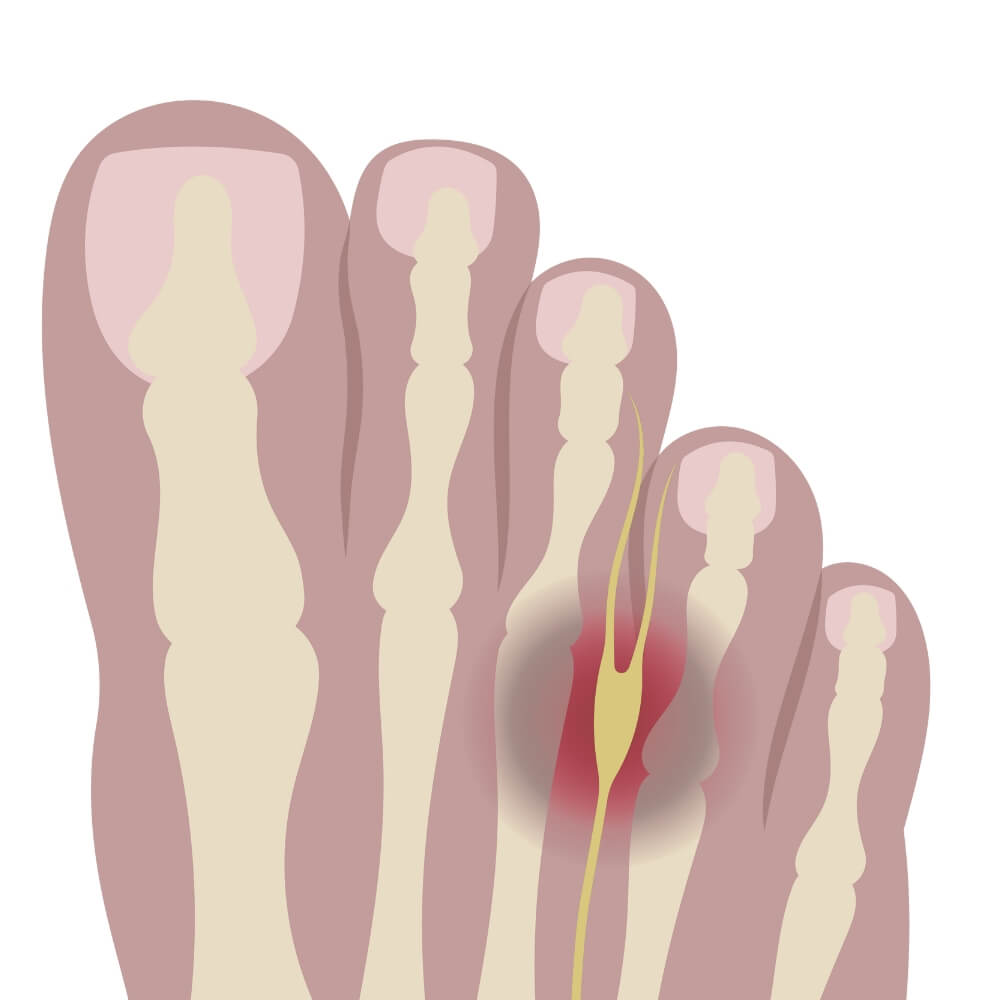
What is Morton's Neuroma?
Morton's neuroma, also referred to as an intermetatarsal neuroma, is a benign (but often uncomfortable) thickening of the nerve tissue in the ball of your foot, not a cancerous growth or tumor. This thickening is a result of compression and irritation of the nerve, most commonly the common plantar digital nerve located between the third and fourth toes.
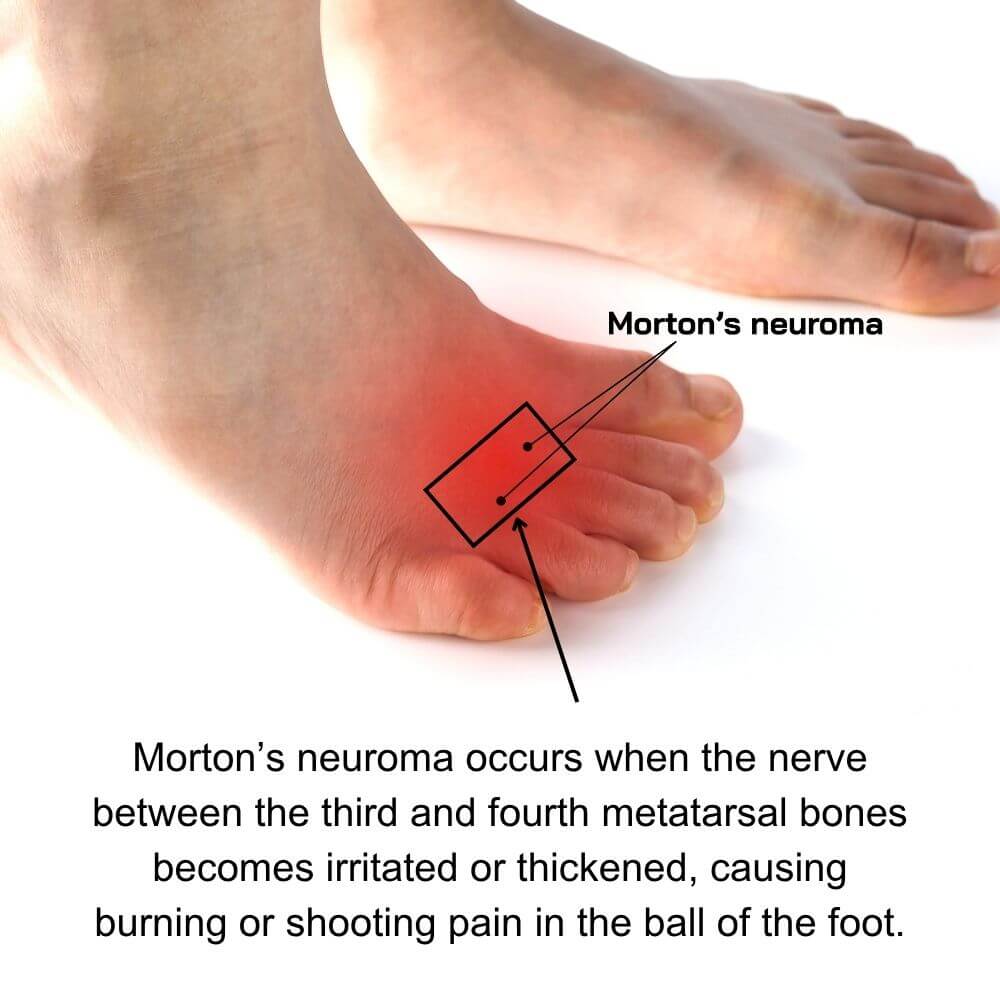
The symptoms of Morton's neuroma can vary from person to person but often include:
- A persistent feeling of having a stone or marble in your shoe.
- A burning or sharp pain in the ball of the foot that may extend to the toes.
- Tingling or numbness in the affected toes.
- A cramping sensation in the toes.
These symptoms are often exacerbated by weight-bearing activities like walking or running and can become more pronounced when wearing tight or high-heeled shoes.
The Culprits: Causes of Morton's Neuroma
The development of Morton's neuroma is often linked to factors that cause pressure or injury to the nerves in the forefoot. One of the most significant contributors is improper footwear. Shoes with a narrow, tapered toe box can squeeze the metatarsal bones (the long bones in the midfoot) together, compressing the nerves between them. High-heeled shoes can also be a major factor, as they shift your body weight onto the ball of your foot, increasing the pressure on the forefoot nerves.
Beyond footwear choices, certain foot structures and biomechanics can predispose an individual to developing Morton's neuroma. These can include:
- Foot deformities: Conditions like bunions, hammertoes, and flat feet can alter the alignment of the foot and increase pressure on the forefoot nerves.
- High-impact activities: Sports that involve repetitive impact on the feet, such as running or racquet sports, can contribute to nerve irritation when proper load management and footwear considerations are not accurately accounted for.
- Anatomical factors</strong: In some individuals, the space between the metatarsal bones is naturally narrower, making the nerves more susceptible to compression.
Morton's Neuroma vs. Metatarsalgia: What's the Difference?
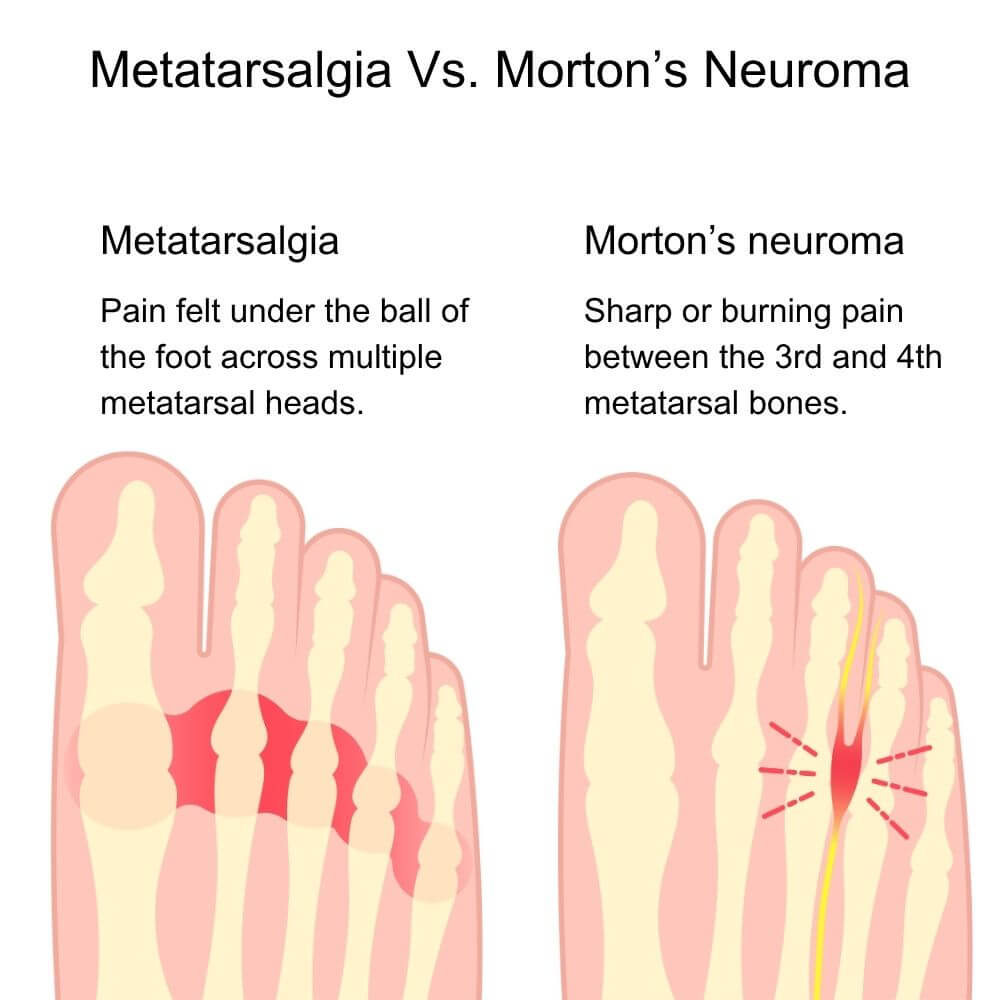
It's easy to confuse Morton's neuroma with a more general term for pain in the ball of the foot, known as metatarsalgia. While Morton's neuroma is a specific cause of metatarsalgia, the two are not the same. Metatarsalgia is a broad term that describes pain in the metatarsal region. This pain can stem from various causes, including overuse, high-impact activities, or other foot conditions.
The key difference lies in the specificity of the diagnosis. Metatarsalgia is a more general term for pain in the ball of the foot and/or across the metatarsal heads, whereas Morton's neuroma is pain specifically caused by the thickening of a nerve in that area. A physician or physical therapist can perform a thorough examination to more precisely determine the cause and best treatment approach of your forefoot pain.
Finding Relief: Shoe Features that Help Prevent and Alleviate Pain from Morton's Neuroma
One of the most effective preventative measures and conservative treatments for Morton's neuroma is the right footwear. The right shoes can make a notable difference in alleviating pain and preventing further irritation of the affected nerves. Here are some key features to look for:
Wide Toe Box
A spacious, wide toe box is perhaps the most important feature in a shoe for someone with Morton's neuroma, but also for foot health in general. A wider toe box allows the toes to spread out naturally, which in turn increases the space between the metatarsal bones. This reduces the compression on the nerves and can significantly decrease or prevent pain. Think of it as giving your forefoot some much-needed breathing room.
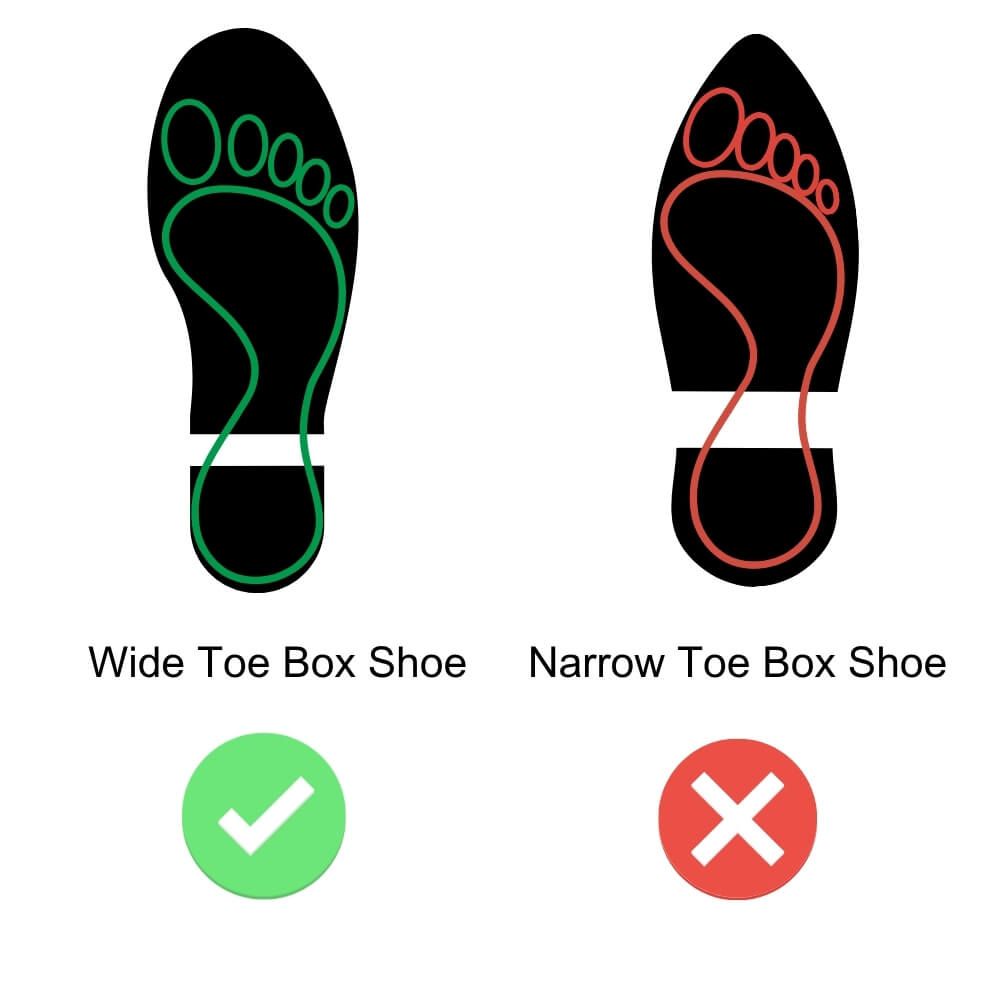
Metatarsal Support and Cushioning
Shoes with ample cushioning in the forefoot can help to absorb shock and reduce the pressure on the ball of the foot. Additionally, some shoes and insoles are designed with a metatarsal pad: a small, raised area that sits just behind the ball of the foot. The purpose of this pad is to support the transverse arch of the foot, which can help to spread the metatarsal bones apart and create more space for the nerve.
Proper Arch Support
Arch support features can be helpful for many individuals for maintaining proper foot alignment and distributing pressure evenly across the foot. For individuals with flat feet or other biomechanical issues, appropriate arch support can help to prevent the excessive inward rolling of the foot (often referred to as “overpronation”) that can contribute to forefoot pressure. By supporting the arch, the strain on the forefoot may be reduced, which can help to alleviate or prevent the symptoms of Morton's neuroma.
Insoles and Orthotics
For some individuals, over-the-counter or custom-made orthotics can provide an extra layer of support and cushioning. Insoles with a built-in metatarsal pad can be particularly beneficial. Custom orthotics, prescribed by a podiatrist or physical therapist, are molded to the specific contours of your feet and can address more significant biomechanical issues.
Will Morton's Neuroma Go Away on Its Own?
It's a common question, but unfortunately, the anatomical changes of Morton's neuroma do not typically resolve on their own. The thickened nerve tissue will generally not revert to its normal state without some form of intervention. However, the good news is that for many people with mild to moderate cases, conservative treatments, especially wearing appropriate footwear, can be highly effective in preventing, managing, and minimizing (or eliminating) the painful symptoms.
By consistently choosing shoes that provide adequate space, support, and cushioning, you can create an environment where the nerve is no longer being compressed and irritated. This can lead to a significant reduction in pain and allow you to return to your daily activities with greater comfort. If conservative measures don't provide sufficient relief, other treatments such as corticosteroid injections or, in some cases, surgery may be considered.
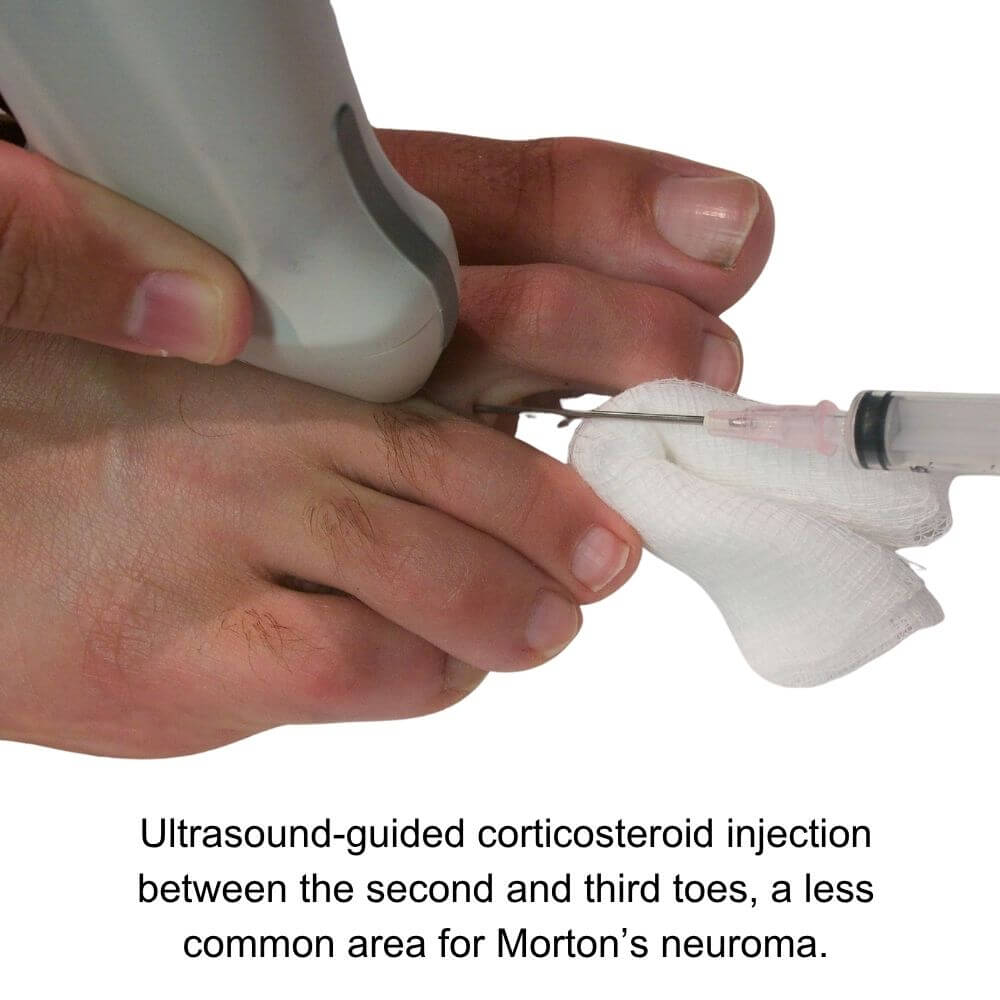
If you are experiencing persistent pain in the ball of your foot, it is always best to consult with a healthcare professional for an accurate diagnosis and a personalized treatment plan. They can help you determine the underlying cause of your pain and guide you toward the most effective solutions, including finding the right footwear to get you back on your feet, pain-free.
About author:
Troy Hurst, PT, DPT, is a licensed physical therapist who received his Doctor of Physical Therapy degree from Carroll University in 2017. He specializes in the treatment of orthopedic and vestibular conditions, and has been a freelance medical writer since 2018.

